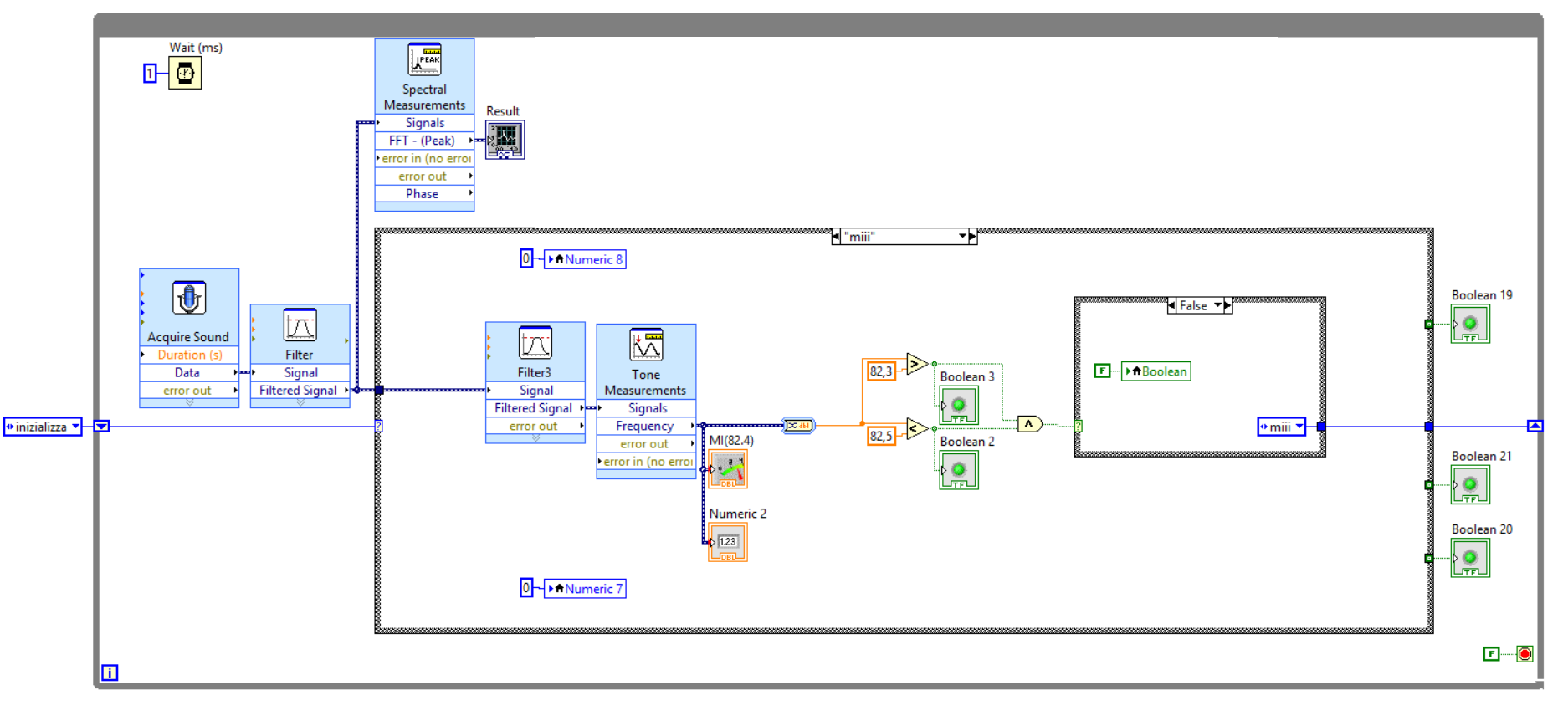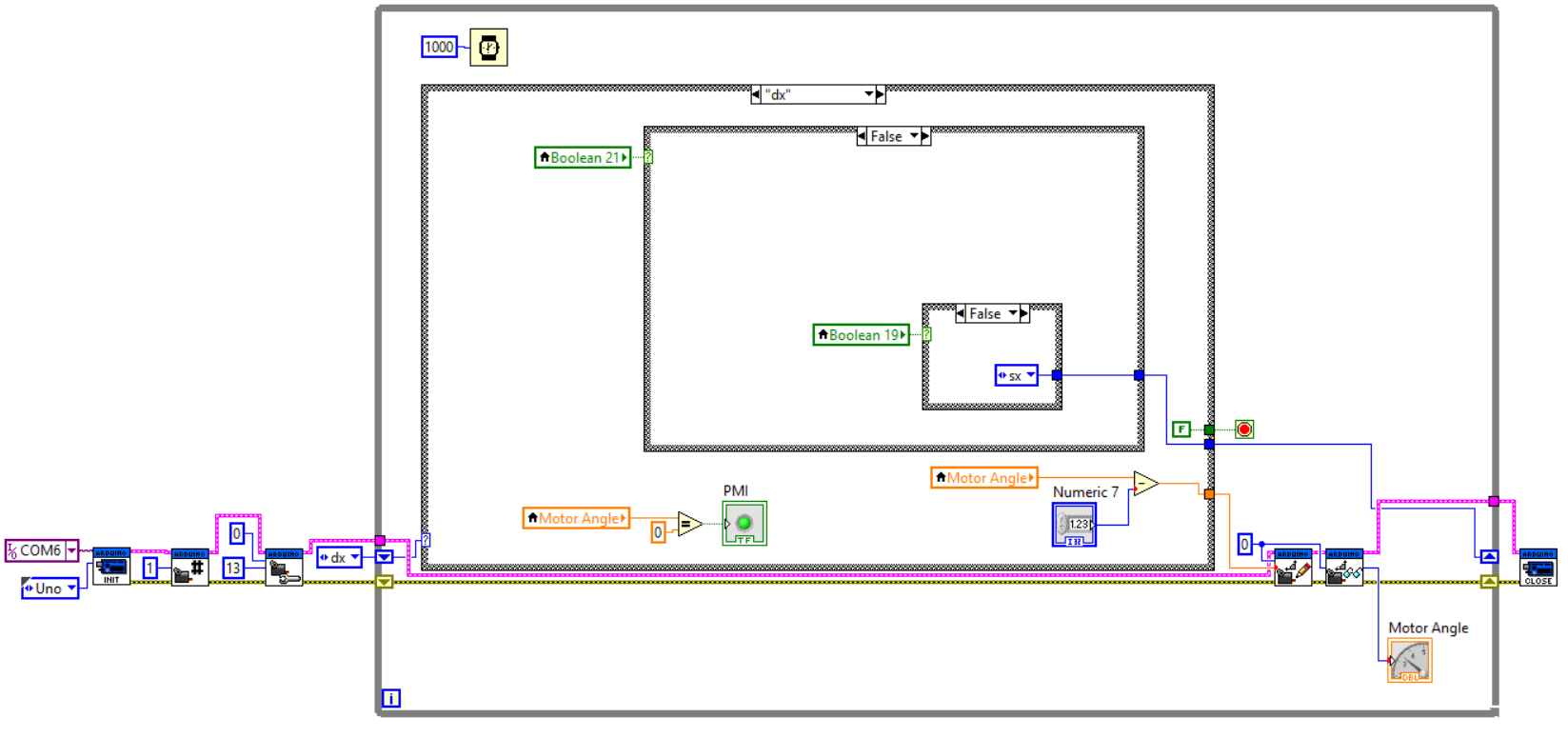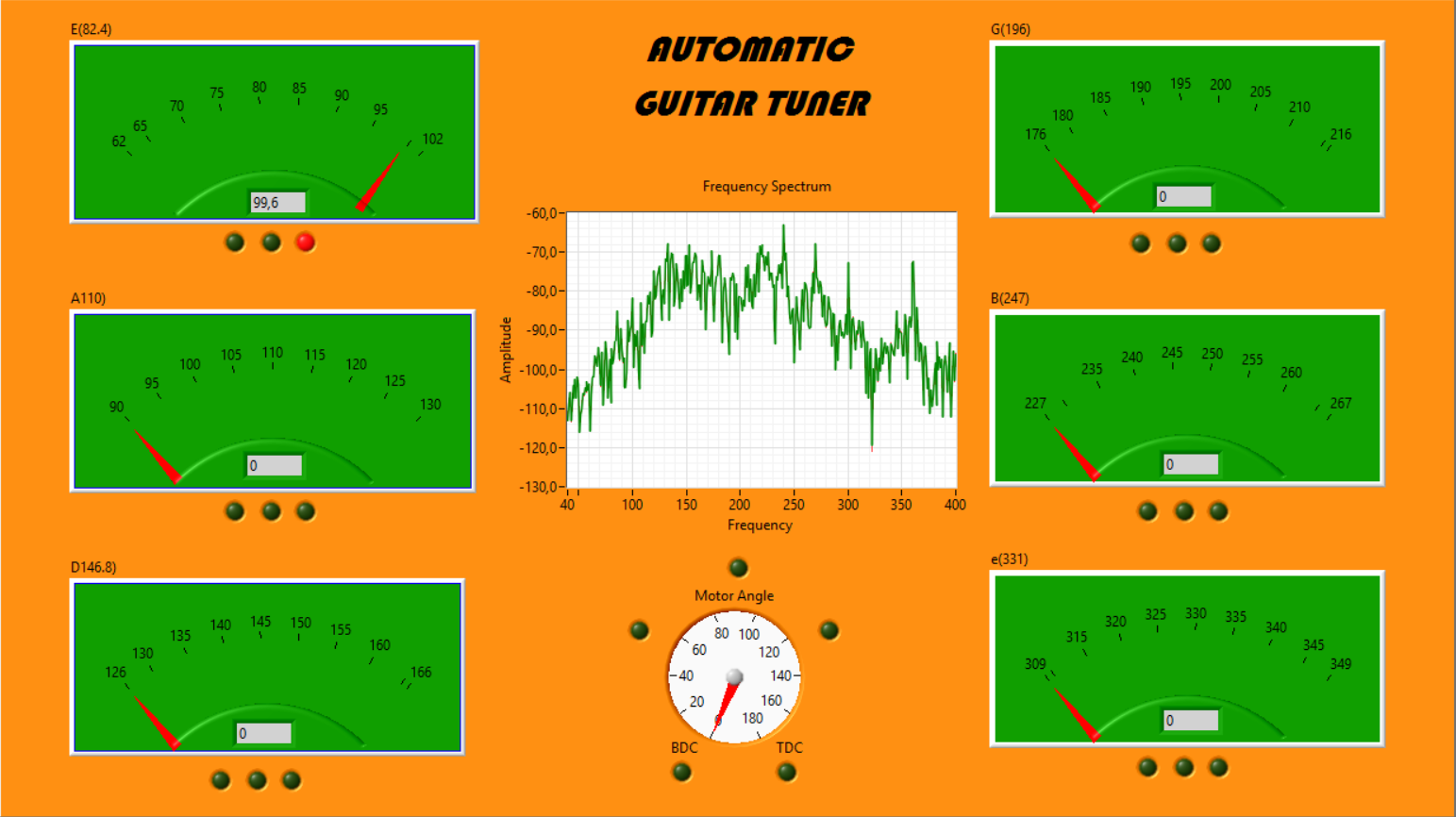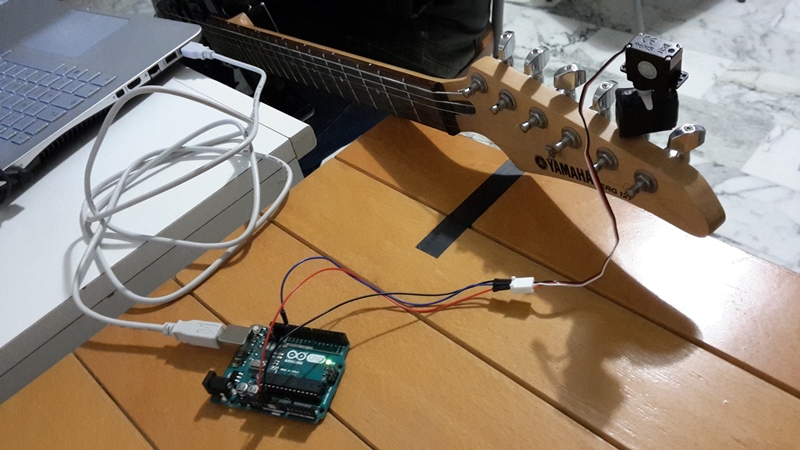- Document History
- Subscribe to RSS Feed
- Mark as New
- Mark as Read
- Bookmark
- Subscribe
- Printer Friendly Page
- Report to a Moderator
- Subscribe to RSS Feed
- Mark as New
- Mark as Read
- Bookmark
- Subscribe
- Printer Friendly Page
- Report to a Moderator
Automatic Guitar Tuner - Università del Salento - Italy
Contact Information
Competition Year: 2016
University: Università Del Salento
Team Members: Claudio Ciaccioli (2014), Fabio Indraccolo (2015), Fabrizio Vena (2010)
Email Address: claudiociacc89@hotmail.it
Submission Language: English
Project Information
Title:
Automatic Guitar Tuner
Description:
We have developed a device and a GUI that can help anyone tune a guitar.
Products:
NI LabVIEW 2014, LabVIEW Interface for Arduino (LIFA), Arduino Uno board and software, Servo Motor SM S2309S.
The Challenge:
Tuning a guitar is not simple task. Especially for a beginner, developing both the acoustic and the manual skills requires a lot of time and practice. This device allows the novice guitarist to immediately get to the playing part, while the GUI gradually teaches how to achieve the goal himself.
The Solution:
(Video demonstration): https://drive.google.com/file/d/0Bz0WPSO1AODGS2EtUU9FMUNxUFE/view?usp=sharing
This prototype is a typical example of a mechatronic device. Using the PC’s built-in microphone, the guitar tone is acquired and compared with the target frequency of each string. Figure 1 shows, through the block diagram, how these tasks are carried out. The digital control logic programmed in LabVIEW leads the servomotor, through Arduino, to act onto the guitar’s mechanics, compensating the difference between the current tone and the desired target.

Figure 1 - Closed loop control explained by block diagram
Parts of the LabVIEW code are shown in figure 2 and 3. Both use a State Machine architecture which allows to automatically switch between different cases if certain conditions are met. The code in figure 2 deals with acquiring and filtering the sound, comparing the frequencies and, when the string is in tune, going to the next one.

Figure 2 - Tuning State Machine
Figure 3 shows the motor code. Whether a clockwise or a counter clockwise turn is needed to adjust the string tension, hence the frequency, the servo turns the opportune quantity for each string, making this kind of control essentially a proportional one.

Figure 3 - Motor State Machine
Object-oriented programming combined with parallel GUI generation is one of the main advantages of using LabVIEW.
Figure 4 illustrates the didactic purpose of the device, helping the user visualize through gauge meters the tuning state of the string, activating a green led when the target is achieved. A real time frequency spectrum and another gauge for the motor position complete the interface.

Figure 4 - GUI
Ultimately, the hardware configuration needs some improvement.

Figure 5 - Assembled Hardware
This project, still in its beta phase, required no more than a month to be developed and was meant as a project work for the Mechatronics exam. Further adjustments can be made to increase the motor’s power, miniaturize the hardware and better the handling of the device onto the guitar’s mechanics.
Nominate Your Professor
We would like to nominate professor Nicola Ivan Giannoccaro, who supported and motivated us from the beginning and whose teachings have been invaluable for both the practical and theoretical aspects, introducing us to the NI world.
